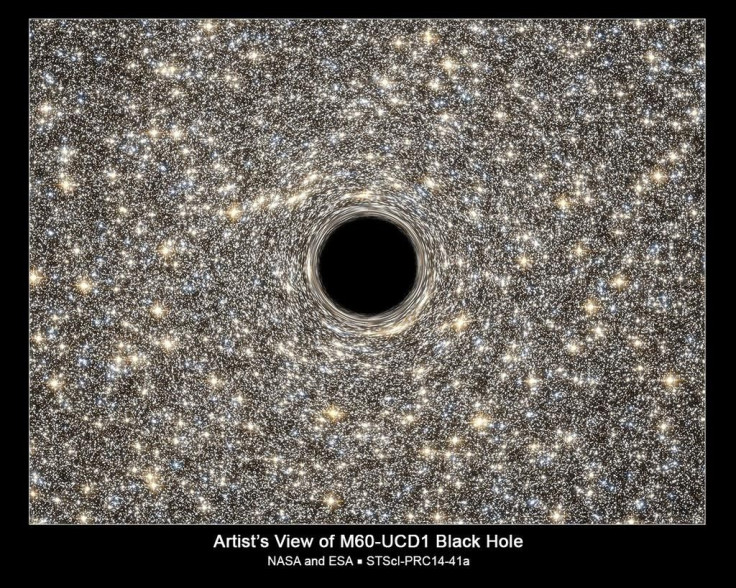Hubble Spots Supermassive Black Hole Inside Tiny Galaxy

Data from NASA’s Hubble Space Telescope, along with ground-based observations, have helped astronomers detect a monster black hole inside one of the tiniest galaxies ever known. Scientists have described it as the discovery of “an unlikely object in an improbable place.”
The small dwarf galaxy, dubbed M60-UCD1, is also one of the densest galaxies known to date, with 140 million stars within a diameter of about 300 light-years, which is about 1/500th of the Milky Way galaxy’s diameter. But, the black hole that sits inside M60-UCD1 is five times the mass of the one at the center of the Milky Way, astronomers said in a study, published in Thursday’s issue of the journal Nature.
“We don’t know of any other way you could make a black hole so big in an object this small,” Anil Seth, an astronomer at the University of Utah and lead author of the study, said in a statement.
The latest findings suggest that the universe could be home to many other compact galaxies like M60-UCD1 that contain supermassive black holes. Astronomers used the Hubble Space Telescope and the Gemini North 8-meter optical and infrared telescope on Hawaii’s Mauna Kea to observe the M60-UCD1 galaxy and measure the black hole’s mass.
According to astronomers, the black hole at the center of the Milky Way galaxy has the mass of four million suns, and it is less than 0.01 percent of the Milky Way’s total mass. By comparison, the supermassive black hole at the center of M60-UCD1 has the mass of 21 million suns and constitutes about 15 percent of the small galaxy’s total mass.
“That is pretty amazing, given that the Milky Way is 500 times larger and more than 1,000 times heavier than the dwarf galaxy M60-UCD1,” Seth said.
The scientists believe that dwarf galaxies could actually be the remnants of larger galaxies that were torn apart during collisions with other galaxies. In the case of M60-UCD1, astronomers suggest that it was once a large galaxy containing 10 billion stars before all the stars and dark matter at its outer edge were torn away while passing very close to the center of an even larger galaxy, dubbed M60.
“M60-UCD1 may eventually be pulled to fully merge with M60, which has its own monster black hole that weighs a whopping 4.5 billion solar masses, or more than 1,000 times bigger than the black hole in our galaxy,” a NASA statement said. “When that happens, the black holes in both galaxies also likely will merge.”
© Copyright IBTimes 2024. All rights reserved.






















